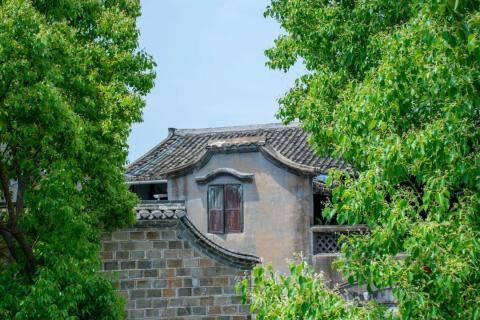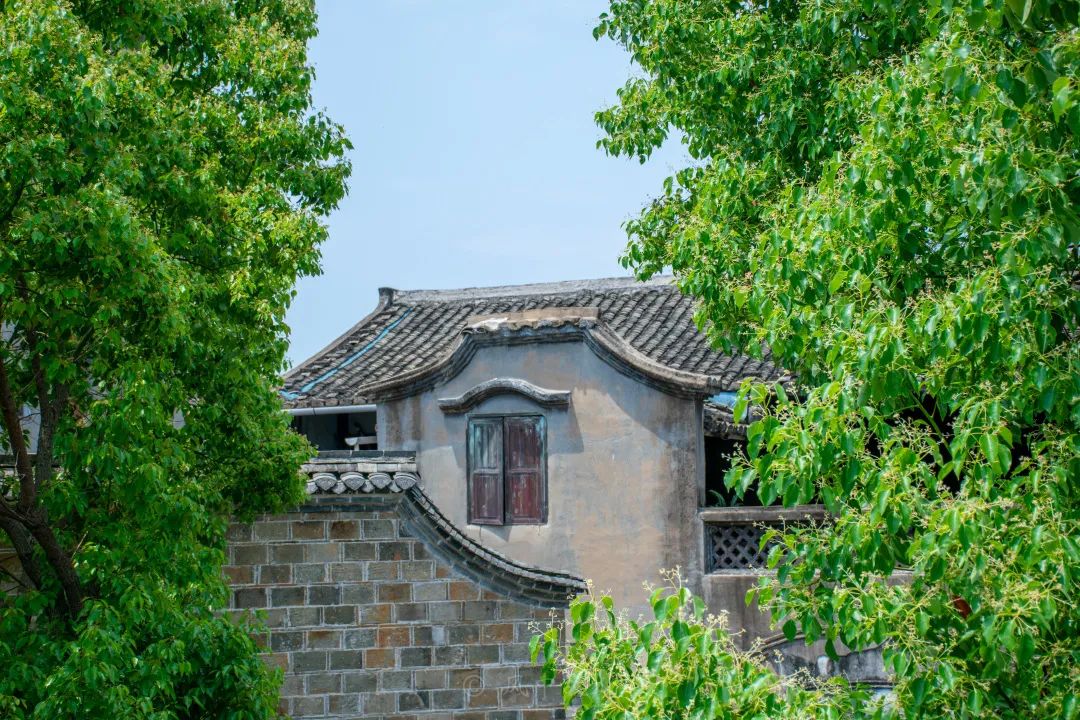
The cloud likes to be quiet and cannot bear the wind, which keeps blowing it everywhere.
The drizzle slants in the breeze in Changting in April, and the faint fragrance of camphor flowers clings to every particle of dust in the air. It flows with the wind into the alleys, into the thousand-year-old streets, and into people's hearts.

Changting
No one would dislike this kind of season. It is suitable for traveling, being in a daze, looking at the mountains, and looking at the sea. Travels in my memory always carry the refreshing aroma of camphor, which is not as sweet as osmanthus, not as fragrant as jasmine, and is most unknown and ordinary, but it is never absent from April’s travels.



Changting
Diantou Street, an ancient street in the Ming and Qing Dynasties, is one of the four historical and traditional blocks in Changting and the earliest commercial block in Gutingzhou City.
Camphor is a standard feature in ancient towns and cities. The drizzle, the slanting wind, the silent fragrance of flowers, the green stone slabs, and the quiet shops seem to be a scene that has not changed for thousands of years.


Changting
Changting is a red town, and traces of revolution can be seen everywhere. In fact, if you travel a lot in the mountainous areas of western Fujian, you will find that these areas have many similarities, such as architecture, environment, people's expressions, and the most interesting thing is the real beliefs. If you don’t believe it, take a look in the middle of the halls of those old houses to see if there is a portrait of Chairman Mao posted; or look on the dilapidated walls to see if there are any vague revolutionary slogans.



Changting
When I first entered this small town, my first impression was that it was dilapidated. Probably because I came from Xiamen, I had a contrast in my mind. The road from the train station to the county town is sparsely populated, with few and dilapidated houses. The vegetation coverage along the way is not high, but the neem trees in the mountains are growing very well. After counting carefully, I saw about ten trees one after another, each one covered with as thin as purple clouds. Flower bouquet. There are many in the city, and they are all full of flowers. I have never seen so many wild neem trees in any city before. It must be that the climate here is suitable for them.

Changting
Trees and flowers are not rare things, just chat. Changting is a lively city, with local people, large and small tourist groups, and constant traffic on the main road passing through the city gate; it is an ancient city, but not an ancient city. Once you pass the city wall, you can walk around the city and see There are antique buildings, but many of them have been rebuilt. Thanks to those highly skilled craftsmen, the ability to restore the old as it was has become increasingly sophisticated.




Changting
There is a saying that has been passed down hundreds of times. People always put Changting Ancient City and Fenghuang Ancient City together. I think there is something wrong. Why do they insist on putting two completely different places together? The water of Tuojiang River is bold and unrestrained, while the water of Tingjiang River is quiet and gentle. The two ancient cities give people completely different feelings. Fenghuang Ancient City already has a well-established ancient city operation model, while Changting Ancient City is still exploring. In this ancient city that has not yet been fully commercialized, you can still see dilapidated buildings that have not had time to be repaired, and you can also see the lives of ordinary people. . At least, you won’t see dozens of bars on both sides of the Tingjiang River partying all night long. Today's Changting Ancient City still carries traces of the past and scars of the past.
Touring ancient cities and staying in ancient buildings has come true in Changting. The inn where I stayed has been around since the Ming and Qing Dynasties. It has an antique feel and creaks. Whether you are going up the stairs or walking in the corridor on the second floor, the wooden boards under your feet will make a lot of noise. The sound of the sound seems to remind you: step on it gently, I am a cultural relic. If a wooden building like this stands near water or in a season with abundant rain, the humidity inside the house will be very high, and it will also have a strong wood smell. However, falling asleep with the drizzle and the scent of wood feels like sleeping in a forest.




Changting
Put aside the ancient buildings in the city and those major historical events, this is just an ordinary small county town. Most people, like people elsewhere, are busy making a living every day, talking in Hakka, walking on the ancient city roads, bustling and lively.

Changting
I came here just to see the scenery I have never seen, to hear the stories I have never heard, and then to use my lens to tell you what happened here.



Picture 1: Qu Qiubai’s monument; Picture 2: The pomegranate tree in the yard where Qu Qiubai was imprisoned only blooms but does not bear fruit.






The Changting County Museum has the "Tingzhou Hakka Museum Exhibition", "Changting Revolutionary History Exhibition", "Qu Qiubai's Prison", "Tingzhou Examination Institute Site" and two ancient Tang Dynasty trees about 1,200 years old. Cypress (Ji Xiaolan once mentioned these two ancient cypresses in "Yuewei Cottage Notes") and so on.




Confucian Temple, it seems that every place with a bit of culture has a Confucius Temple.






There are very few tourists in the Confucian Temple, and a local Chinese school is located here. By the way, I watched the children's ceremony to worship Confucius.





Every household has brand-new couplets posted on it, which is very festive.

There is no inn that is officially open to the public.

There are chairs in the openings under almost every city gate, and locals like to gather under the city gates to chat.





Picture 1 shows a stage, and the remaining pictures were taken in Thean Hou Palace. Mazu beliefs and customs have a wide range of influences.



